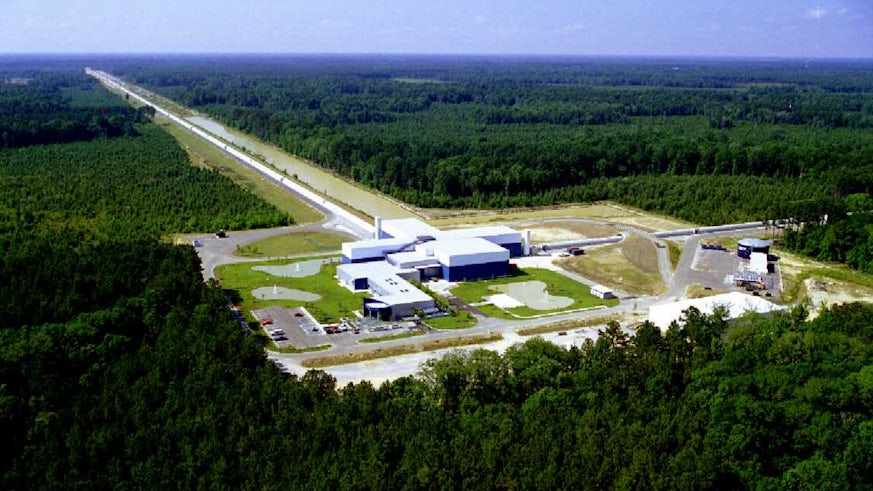Hunt for Einstein’s “elusive” gravitational waves begins
2 October 2015

University researchers begin their search for tiny ripples in space
University researchers have begun looking for the first direct evidence of the existence of gravitational waves.
Two upgraded detectors, based at Hanford and Livingston in the US, have been brought online and are starting to search for signals with unprecedented accuracy as part of the Advanced LIGO (Laser Interferometer Gravitational Wave Observatory) Project.
Researchers from Cardiff University’s School of Physics and Astronomy will use a powerful supercomputer to comb through the data to search for the tell-tale signals of a gravitational wave.
Gravitational waves are tiny ripples in space-time that are emitted as a result of violent cosmic events, such as exploding stars and merging black holes. These waves were first predicted by Albert Einstein in 1916 as a consequence of his general theory of relativity, but have yet to be detected directly.
As they travel towards Earth, these ripples bring with them information about their origins and about the nature of gravity that cannot be obtained by other astronomical tools.
Professor B S Sathyaprakash, from the University’s School of Physics and Astronomy, said: “Advanced LIGO will open a new window for us to observe violent processes in the Universe, such as black holes colliding at near the speed of light. At Cardiff University we hope to use these observations to understand the nature of space-time and matter under extreme conditions, and to test Einstein's theory of gravity when gravitational fields become super strong.”
It is believed the detection of gravitational waves will usher in a new era of astronomy, allowing researchers to examine the last minutes of the lives of black holes, as well as provide a snapshot of the Universe just a fraction of a second after the Big Bang.
Researchers in the Gravitational Physics Group at Cardiff University are experts in the simulation of violent cosmic events in the Universe, and have used large-scale, state-of-the-art computer simulations of black-hole collisions to produce theoretical models of gravitational waves.
Professor Mark Hannam said: "For the last decade we have been performing these computer simulations to predict the signals from colliding black holes – but that would be nothing compared to finally detecting these events in reality."
Dr Patrick Sutton said: "Every time astronomers have learned how to view the Universe in a new way, they've found things that were completely unexpected, from Saturn's rings to pulsars and the echoes of the Big Bang itself. The whole community is excited to see what surprises Nature has in store for us as well."
Dr Stephen Fairhurst said: “The operation of Advanced LIGO will herald the beginning of gravitational wave astronomy. We will make use of the Cardiff University supercomputer to search through the detector data to identify the tell-tale signs of a gravitational wave signal.”
Dr Fairhurst was recently featured in a Royal Society film promoting gravitational wave research and collaboration in science, which can be viewed below.
